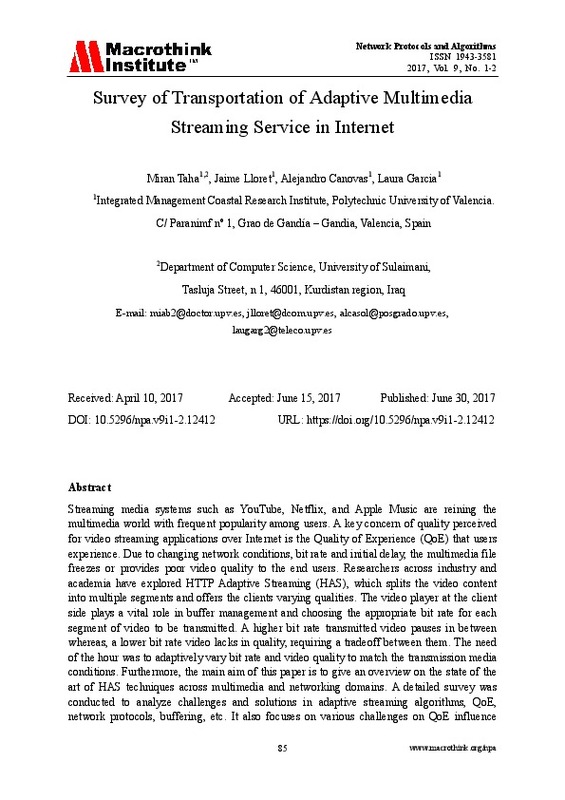JavaScript is disabled for your browser. Some features of this site may not work without it.
Buscar en RiuNet
Listar
Mi cuenta
Estadísticas
Ayuda RiuNet
Admin. UPV
Survey of Transportation of Adaptive Multimedia Streaming service in Internet
Mostrar el registro completo del ítem
Abdullah, MTA.; Lloret, J.; Canovas Solbes, A.; García-García, L. (2017). Survey of Transportation of Adaptive Multimedia Streaming service in Internet. Network Protocols and Algorithms. 9(1-2):85-125. doi:10.5296/npa.v9i1-2.12412
Por favor, use este identificador para citar o enlazar este ítem: http://hdl.handle.net/10251/102299
Ficheros en el ítem
Metadatos del ítem
| Título: | Survey of Transportation of Adaptive Multimedia Streaming service in Internet | |
| Autor: | Abdullah, Miran Taha Abdullah Cánovas Solbes, Alejandro | |
| Entidad UPV: |
|
|
| Fecha difusión: |
|
|
| Resumen: |
[DE] World Wide Web is the greatest boon towards the technological advancement of modern era. Using the benefits of Internet globally, anywhere and anytime, users can avail the benefits of accessing live and on demand video ...[+]
|
|
| Palabras clave: |
|
|
| Derechos de uso: | Reconocimiento (by) | |
| Fuente: |
|
|
| DOI: |
|
|
| Editorial: |
|
|
| Versión del editor: | https://doi.org/10.5296/npa.v9i1-2.12412 | |
| Tipo: |
|









